(2 pm. – promoted by ek hornbeck)
Thirty nine years ago (1972), the extremely prescient Limits to Growth was published, basically arguing that the Earth’s finite resources, e.g., food, water, air, etc., created a natural limit or “carrying capacity” to sustainable human populations. At or near the limits of carrying capacity, population growth must cease, or any growth that occurred would have to depend on concomitant increases in efficiency of resource utilization, rather than in quantitative resource usage, in order for the population to be sustainable into the foreseeable future. The consequences of exceeding carrying capacity were articulated long ago:
What most frequently meets our view (and occasions complaint), is our teeming population: our numbers are burdensome to the world, which can hardly supply us from its natural elements; our wants grow more and more keen, and our complaints more bitter in all mouths, whilst Nature fails in affording us her usual sustenance. In very deed, pestilence, and famine, and wars, and earthquakes have to be regarded as a remedy for nations, as the means of pruning the luxuriance of the human race.
-Tertullian (De Anima)
I love that quote, not just for the Four Horsemen and the equation of “human luxuriance” with the relief of apocalypse, but also the acute observations about wants growing more keen and complaints more bitter, which aptly describes the effects of activating the endocrine stress axis.
Thomas Malthus formalized the understanding of the problem in terms of the exponential growth of populations outstripping finite resources:
The cause to which I allude, is the constant tendency in all animated life to increase beyond the nourishment prepared for it. . .upon the whole, that the population is in general so nearly on a level with the average supply of food, that every little deficiency from unfavourable weather or other causes, occasions distress. . .
Robert Malthus, (Of the Checks to Population; An Essay on
the Principle of Population: A View of its Past and Present
Effects on Human Happiness; with an Inquiry into Our
Prospects Respecting the Future Removal or Mitigation of the
Evils which It Occasions Published: London: John Murray,Sixth edition. First published: 1798.)
The thrills and terrors of exponential growth
Exponential growth “occurs when the growth rate of a mathematical function is proportional to the function’s current value.”
Exponential growth forms the basis of chain letters, compound interest, Ponzi schemes, and population growth. For example, in a chain letter, a single person (1) writes to two others (2), who each in turn write to two others (4), and so on, with each subsequent iteration doubling the total value of the previous iteration, e.g., 1, 2, 4, 8, 16, 32… as shown in the graph below:
In this example, doubling occurs in each iteration, or “generation,” although doubling (or halving in the case of exponential decay) can occur with arbitrarily many iterations, depending on the rate chosen. The full set of data (larger graph) shows how exponential growth appears to develop slowly before exploding in massive leaps. In fact, the rate of growth is constant here (always doubling), it’s just that the numbers suddenly become so large at the end that it visually swamps out the earlier signs of growth. The inset graph shows a similar pattern for just the first 10 iterations: the later the growth, the bigger. The massive growth at the end is why investment advisors instruct people to invest as early as possible, due to the similar massive compounding of value nearest the end of the iterations. Waiting for one more doubling of wealth represents the “thrill” of compound growth. Debt and the propagation of a nuclear reaction occur by a similar process of doubling, hence, the “terror” of exponential growth.
St. Matthew Island reindeer
A real life experiment in exponential growth in populations occurred in 1942 when the US Coast Guard introduced 29 reindeer (5 were males) to St. Matthew Island in the Bering Sea as an emergency food source. By 1957 the population had ballooned to 1350, then to 6,000 by 1964, as the graph below (red symbols) shows:
The animals grew prodigiously both ponderally and in population numbers, as the exponential fit shows, before suddenly crashing to 42 animals in the subsequent year, a classic case of “overshoot and collapse,” as the animals suddenly (in their final iteration) outstripped available food resources, particularly their favored lichens.
Recall that in exponential growth only half of the total resource limits are used up, and so it appears plenty of resources remains, until the final doubling, which then consumes the entire remaining half in one big bite. Thus, the longer you wait to fix an over-population problem, the more existentially precarious it becomes.
The human predicament
One has to ask whether the human population has Titanically outgrown its ability to sustain itself, vastly exceeding the carrying capacity of the Earth, artificially propped up by cheap energy. We currently have no general public awareness of the problem, no viable mitigation plans, and no alternatives to a major population crash, a mass die-off through the usual agents of war, famine, disease, and environmental toxication. Our prior lack of preparation and current economic debacle ensure this. Under the best-case scenarios, if we had public awareness, political will, a timely implementation buffer, and money, technology still offers nothing as a replacement for current fossil fuels. The best we could hope for would involve implementing a massive and somewhat controlled scaling-down of population and living standards, a controlled “crash” program, if you will. Unfortunately, we are nowhere near the best-case scenario. It appears the situation will resolve (is resolving?) itself in a traumatically uncontrolled and lethal manner.
The human population anomaly relied on fossil fuels
Until very recently, the evolutionarily modern human population was relatively static for the past 70,000 years. Agriculture was invented/discovered around 10,000 years ago, the food supplies of which gave rise to an increasing division of labor and expert knowledge, culminating in the advent of the scientific method, let’s call it 1250 AD, or so. The birthday of expert knowledge is inexact, resulting from the longest labor on record, which lasted from long before Aristotle to well beyond Leibniz. What matters is that expert knowledge only began increasing population (the instantaneous or apparent “carrying capacity” of the Earth) only following the exploitation of cheap, non-renewable fossil fuels, starting, let’s say, with the invention of the commercial steam engine (ca. 1700), which was used to pump standing ground water out of the coal mines and replace beasts of burden in agricultural fields, resulting in the (second) agricultural and industrial revolutions, both of which allowed major advances in energy consumption.
Internal combustion engines using oil-based products, e.g., the Benz Motorwagen (ca. 1885) soon replaced wood and coal-driven steam engines. The synergies of expert knowledge and cheap labor (energy) resulted in increases in population, greater division of labor, more precise expert knowledge, and greater exploitation of energy resources, culminating in our peak energy usage, shown below by source:
Note that the y-axis values use European punctuation, i.e., 10.000 Mtoe equals 10,000 Mtoe (million tons of oil equivalents). The labels are intelligible German-English cognates, except for Brennholz, which is firewood.
Using the first two graphs, I plotted population growth against energy use since 1850 (I casually lifted the energy numbers right off the graph, whereas the population numbers are from the US census bureau).
The relationship between energy use and population growth is essentially linear, accounting for more than 99% of the variance in the data. When energy use goes up, the population goes up. Too see where the population is headed in the future as energy production declines, let your eyes trace the line back down toward the origin.
Peak Oil
“It is time for the world to re-read Limits to Growth. The message of 1972 is far more real and relevant in 2004. We wasted a valuable 30 years by misreading the message
of the first book.”-Matthew R. Simmons, energy analyst and founder, Simmons & Company International, the world’s largest energy investment banking practice. Author, Twilight in the Desert
Fossil fuels take tens of millions of years to form, and are non-renewable over any humanly useful time frame. Since 1850, we’ve used about half of our non-renewable endowment of cheap energy. Exact estimates of when we hit peak oil production vary, but not by much. In 2005, Robert Hirsch showed 12 estimates of peak oil that averaged to the year 2012 (and 5 months!). However, if you throw out the excessively optimistic outlier from Shell Oil (> 2 standard deviations from the mean), the estimate drops to the year 2011 (and 3 months!). Either way, the standard errors around these estimates are “tighter than a bullfrog’s ass in fly-time.” Peak oil is here.
Oil production essentially plateaued in around 2006, and it will decline from here on out. Gas and coal will peak slightly later, 10-20 years, respectively, but the same story holds.
All of human civilization, as we know it, our massive global economy, cheap transportation, cheap food, advanced communications and medicine, just about everything we know and have, depended on cheap energy, which is going away.
Alternatives to fossil fuels
Recently, Richard Heinberg compared the potential of eighteen alternative energy sources, in Searching for a miracle: Net energy limits and the fate of industrial society (pdf).
Several critical factors, among many, in assessing the viability of various energy sources include energy return on energy invested (EROEI), and the current and future capacities for development. EROEI is critical, insofar as you would never invest more energy into extracting energy than the extracted energy is worth, e.g., you wouldn’t spend one barrel of oil to extract one barrel, and the absolute minimum EROEI ratio has to be greater than 1.0. Oil used to have an EROEI of about 100:1 in the early days of extracting the best and easiest crude. Since it becomes harder to extract ever-worse grades over time, oil’s EROEI has dropped to 19:1, which will decrease further as time passes.
Thus, whatever is the total reserve in the ground, it will only be economical to extract part of it, resulting in a “net energy reserve.” For example, the chart below shows the production curves (Hubbert curves) for oil in terms of gross reserves in the ground and net production, i.e., that which is economically feasible to extract.
The steeper decline of the net curve on the descending limb of production exists because the remaining oil is harder to extract and of lower quality, i.e., more costly (including environmental costs, to which BP’s catastrophe in the Gulf attests), and advances the time when oil will cease being extracted entirely. This sudden drop off closely resembles the steep production drop-offs in real fields, e.g., the United Kingdom (see page 7, pdf). Here’s the fuel comparison table from Heinberg’s report:
The fossil fuels, which have higher EROEI’s and account for the vast majority of our usage, are simply running out. The alternatives tend to have low EROEI’s, low current or final capacity, or all of the above. Each is beset by additional problems, as well. For example, better alternatives, such as wind power, are hardly developed at present, but would continue to suffer from intermittency issues.
Other liquid fuels, which have the required energy density for transportation uses, such as ethanol and biodiesel, have low EROEIs and poor realizable production capacities.
Nuclear has a lower EROEI than imagined and is currently an environmental disaster, spewing forth isotopes in an uncontrolled fashion, and having no long-term storage strategies.
Hirsch’s (2005) recommendation was to have at least a 10 to 20-year lead time prior to peak fossil fuels in addressing the massive retrofitting of society necessary to make these alternative fuels viable without severely hard landings.
We have probably passed the peak of oil. Failing to have even begun the retrofit in any meaningful way at a time when the world is running out of cheap energy AND financially insolvent guarantees traumatic and lethal outcomes.
Government is more than cognizant of the existential issues
Since Franklin Roosevelt’s 1943 declaration, Saudi Arabia’s oil supplies have been a national strategic interest of the United States, resulting in a defense pact that only intensified during the cold war. Preventing Axis and then cold war enemies from controlling the largest oil supplies on the planet has been regarded as essential to US global dominance by every president since Roosevelt. Everything we have done in the Middle East and nearby oily regions of the world — from overthrowing Iran’s Mossadegh in 1953, to backing Osama bin Laden and Reagan’s so-called freedom fighters against the Soviet invasion of Afghanistan, to supporting Saddam Hussein against Iran, to our 1991 war against Iraq, to our own invasions and 10 and 8-year occupations of Afghanistan and Iraq, respectively, after 9/11 (a million-plus dead), to our current attack on Libya (and non-attacks on Yemeni and Bahraini governments, where the US Fifth fleet is parked), to our shenanigans in Georgia, and now military bases in Yugoslavia, Romania and Bulgaria — have control over energy resources, from Africa to the Caspian basin, as their primary objective. The legality and morality of these operations do not even rank as concerns. As Madeleine Albright famously said about the decade of severe sanctions against Iraq that killed half a million children, “We think the price was worth it.”
Federal Reserve Chairman Alan Greenspan was personally saddened that no one could admit the truth that the Iraq war (part II) was about oil:
“The Iraq war is largely about oil,” former Federal Reserve Chairman Alan Greenspan says in his new book — an assertion disputed by lawmakers and the U.S. Defense secretary.
“I’m saddened that it is politically inconvenient to acknowledge what everyone knows,” Greenspan, 81, writes in “The Age of Turbulence: Adventures in a New World.”
Killing a million people is politically inconvenient, especially in a war of aggression in which torture and many other war crimes were committed.
As with any noble enterprise of great sweep and complexity, a little mission creep and collateral damage are bound to occur here and there. Major Ralph Peters laid the foundation and pillars of our future ambitions for global dominance more nakedly and succinctly:
There will be no peace. At any given moment for the rest of our lifetimes, there will be multiple conflicts in mutating forms around the globe. Violent conflict will dominate the headlines, but cultural and economic struggles will be steadier and ultimately more decisive. The de facto role of the US armed forces will be to keep the world safe for our economy and open to our cultural assault. To those ends, we will do a fair amount of killing.
Our “economic and cultural assault” refer to opening markets to American-style capitalism, whereas “a fair amount of killing” is self-explanatory. Profits, especially profits from compound interest, require growth, and growth requires cheap energy and cheap labor, hence the capitalists’ need for ever more energy, and ever greater numbers of wage slaves.
The energy summary from the 2010 Joint Operating Environment study (pdf) from the US Joint Forces Command indicates the military’s ongoing awareness of the energy situation:
To generate the energy required worldwide by the 2030s would require us to find an additional 1.4 MBD every year until then.
During the next twenty-five years, coal, oil, and natural gas will remain indispensable to meet energy requirements. The discovery rate for new petroleum and gas fields over the past two decades (with the possible exception of Brazil) provides little reason for optimism that future efforts will find major new fields.
At present, investment in oil production is only beginning to pick up, with the result that production could reach a prolonged plateau. By 2030, the world will require production of 118 MBD, but energy producers may only be producing 100 MBD unless there are major changes in current investment and drilling capacity.
By 2012, surplus oil production capacity could entirely disappear, and as early as 2015, the shortfall in output could reach nearly 10 MBD.
We need new sources of oil; we are not optimistic about finding any; and imminent shortfalls are likely. The summary concludes with a plethora of modal verbs and mitigating factors that “must, may, or should” happen, but won’t.
Bet your bottom dollar that Obama’s upcoming speech on “pushing the reset button” in the Middle East will be the ultimate non-event, signifying absolutely nothing but the status quo.
The general public’s awareness
Public awareness is nil, although perhaps deep in the collective subconscious an inkling of trouble to come scuttles beneath the floorboards. The general public becomes consciously aware of things when you punch them in the gut. For example, even as we launched our trumped-up and illegal wars into Afghanistan and Iraq, energy issues were not in the top 10 list of domestic priorities. As the price of oil climbed prior to the economic crash, public awareness temporarily increased. Since then, the existential issue of our era has dropped out of the top 10 priorities once again, even as we launch further wars and assassinations in the oily regions.
The lack of awareness has multiple causes. First, even if the developed world had any significant memory of pre-industrial living, a memory of “less energy, stuff and stimulation,” which it doesn’t, the problem of 7 billion souls has grown too big to contemplate. We are in complete denial that “the Titanic could sink,” even as we increasingly slogger through the brine and choke on bilge water. Incredulity is what happens when your expectations are violated, but not yet shorn.
I’ll hew to Dave Cohen’s Red pill, Blue pill take on public awareness. It’s not encouraging.
Criticism of Limits to Growth
(This will be brief, ’cause I’m more worn out than Lily von Schtupp.)
Criticism of Limits to Growth usually go something like, “Balderdash, poppycock, outrageous, irresponsible!” Such priceless insights are the domain of politicians.
My second favorite is the outright denial from economists, financial jackals, and corporate bloodsuckers barking, “There are no limits to growth!” precisely because they are waiting for the next doubling time on their compounding wealth. They’ll say anything to put off timely action for as long as possible. Debt-based capitalism requires their studious lies, especially as they slough their debt on to you.
A standard thought experiment will suffice: Starting at a population of, say, 10 billion (we’re almost there), achieved over 50,000-70,000 years, and a doubling time of 35 years, we could cover surface of the planet, all 510 trillion square meters, with one person per meter in 542 years, which is less than one percent of our modern species’ total time on the planet. Of course, about 72% of those people would be floating in their personal square meter of ocean, but should we call that a limit, or an opportunity for dog paddling? In another 35 years we could have two people per square meter for team dog-paddling!
Which brings me to my first favorite criticism of Limits to Growth from Julian Simon: Now we’ve got 7 billion problem solvers! More people equals more problem solvers! Not only are there no limits, but the more the merrier. Here’s how that turd was polished for the general public:
There are no great limits to growth because there are no limits of human intelligence, imagination, and wonder.
– Ronald Reagan
The bottom line is that technology has primarily exacerbated our voracious plundering.
The above criticisms immediately remind one to strangle the last politician using the intestines of the last economist, just prior to stuffing them both up the last plutocrat’s ass. They are not only not to be taken seriously, they are downright damaging, and for the most selfish fucking reasons.
Finally, there are real demographers, like Joel Cohen, who at least makes some interesting and relevant points, questioning the definition of carrying capacity, as well as its application to humans:
“How many with what economies and technologies? At what levels and with what diversity of economic well-being” How many living in what physical, chemical and biological environments. Over what time horizon? With what variability over time, and at what risks? How many with what cultures? What values? And what social, political and legal institutions?”
Sure, these are variables to be studied. For starters, make your best guesses about what technologies will be available when fossil fuels are gone. Things will be simpler and harder. Given that, pick a lifestyle you’d like to lead, make it universally available, and start from there. Make the time horizon “the foreseeable future.” Make cultures, values, social, political and legal institutions “fair.” Repeat. Throwing one’s hands up is not a solution.
Cohen also questions the diverse variability in carrying capacity estimates. My advice to Cohen is to throw out the crazy outliers! A trillion people is too high, by about a shitload of standard deviations.
Finally, Cohen also questions the applicability of carrying capacity to humans. It’s always the same, whether its cognitive abilities, morals, who has language or tool use, carrying capacity, or who gets into Heaven: Humans are special! Bull.fucking.shit!
The 1972 [Limits to Growth] authors gave us some markers to watch for as warning signs or indicators of our possible overshoot of human carrying capacity.
— Deterioration in renewable resources – surface and ground water, forests, fisheries, agricultural land.
— Rising levels of pollution.
— Growing demands for capital, resources, and labor by military and industry to secure, process, and defend resources.
— Investment in human resources (education, shelter, health care) postponed in order to provide immediate consumption and security demands.
— Rising debt; eroding goals for health and environment.
— Growing instability in natural ecosystems.
— Growing gap between rich and poor – between the powerful and the weak.
Check, check, check, check, check, check, check.
Limits to growth are here.

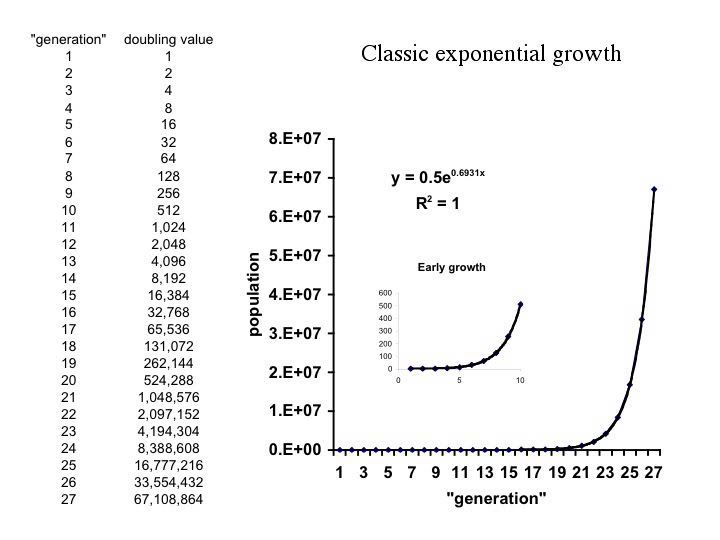
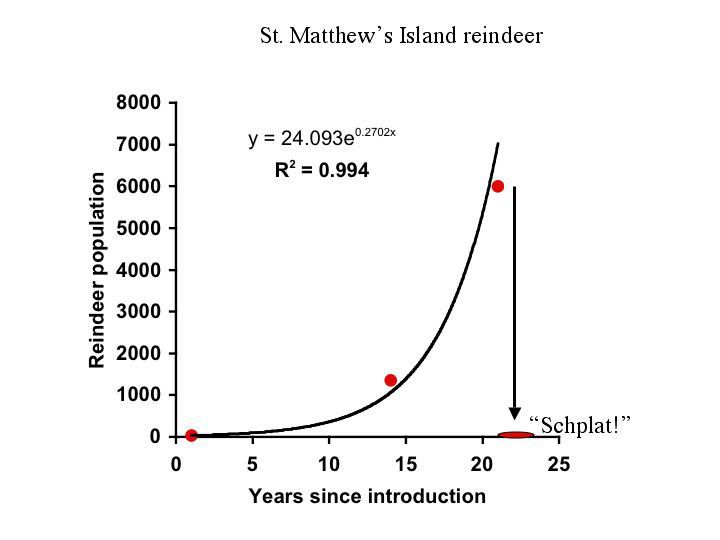
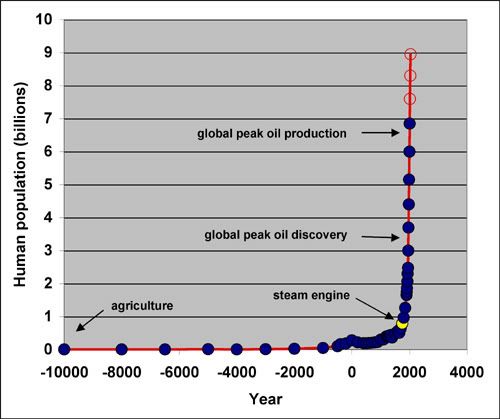
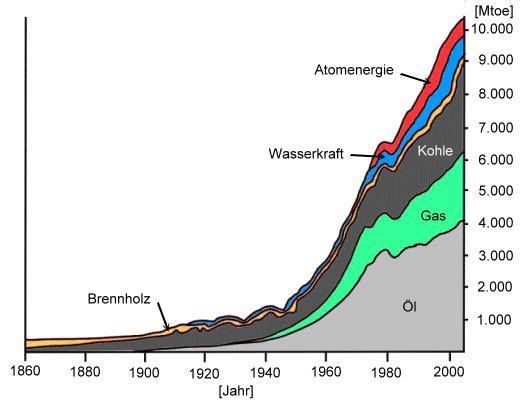
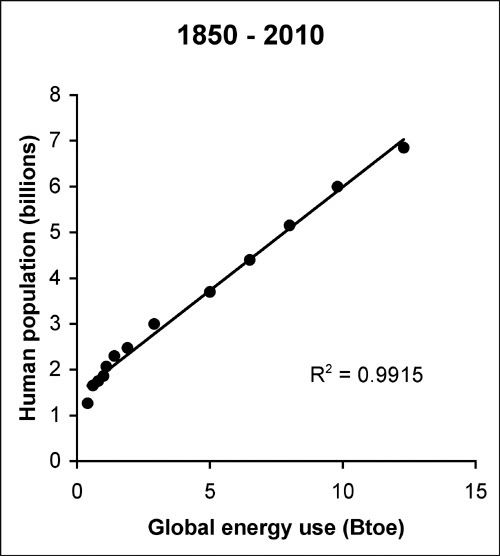
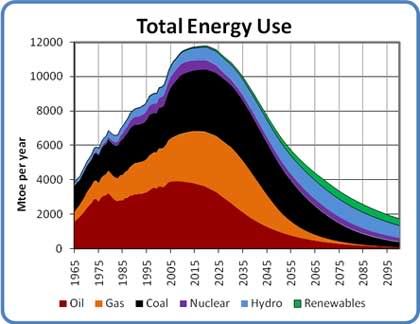
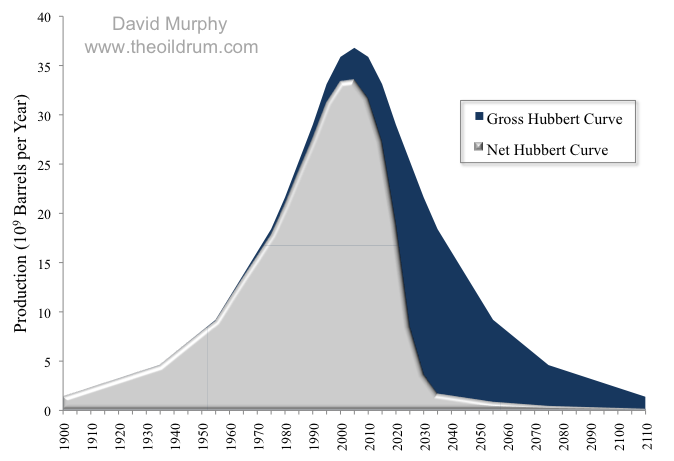
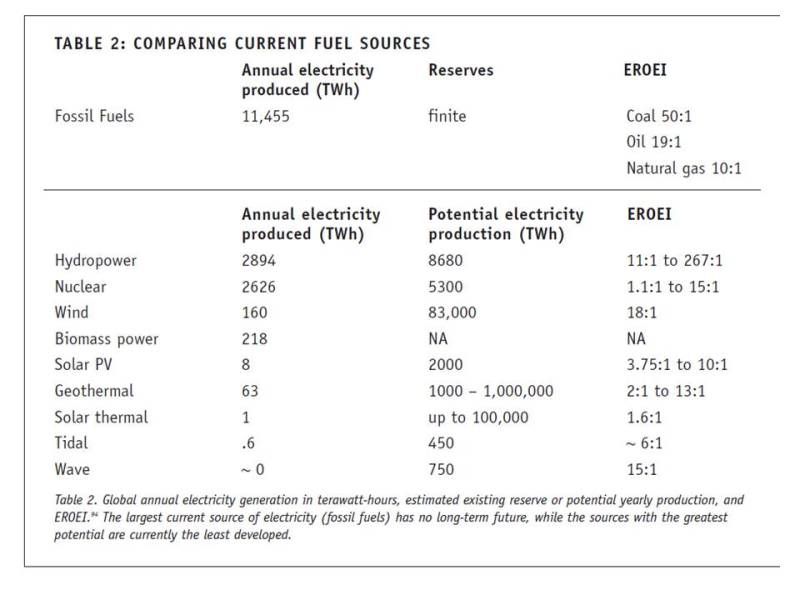
6 comments
Skip to comment form
Author
http://newenergytimes.com/v2/s…
But even if we did have cheap clean sustainable energy People still suck and like to hump each other to make themselves feel good.